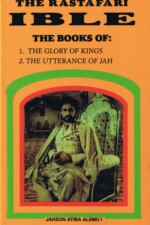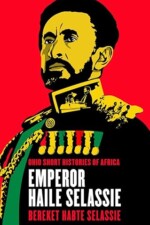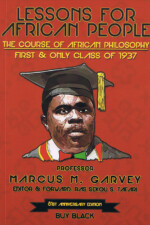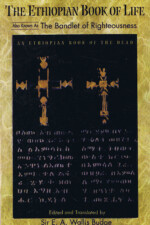- Publisher : Independently published (May 16 2019)
- Language : English
- Paperback : 90 pages
- ISBN-10 : 1099053900
- ISBN-13 : 978-1099053900
- Item weight : 236 g
- Dimensions : 21.59 x 0.53 x 27.94 cm
Shop
Haile Selassie: The Life and Legacy of the Ethiopian Emperor Revered as the Messiah by Rastafarians
Original price was: $16.58.$15.00Current price is: $15.00.
*Includes pictures
*Includes online resources and a bibliography for further reading
“By virtue of His Imperial Blood, as well as by anointing He has received, the person of the Emperor is sacred. His dignity is inviolable and His power indisputable.” – Article 4 of the revised Constitution of Ethiopia (1955)
The modern history of Africa was, until very recently, written on behalf of the indigenous races by the white man, who had forcefully entered the continent during a particularly hubristic and dynamic phase of European history. In 1884, Prince Otto von Bismarck, the German chancellor, brought the plenipotentiaries of all major powers of Europe together, to deal with Africa’s colonization in such a manner as to avoid provocation of war. This event—known as the Berlin Conference of 1884-1885—galvanized a phenomenon that came to be known as the Scramble for Africa. The conference established two fundamental rules for European seizure of Africa. The first of these was that no recognition of annexation would granted without evidence of a practical occupation, and the second, that a practical occupation would be deemed unlawful without a formal appeal for protection made on behalf of a territory by its leader, a plea that must be committed to paper in the form of a legal treaty.
Before World War II, few in the West had ever heard of Abyssinia, and fewer still could point to a map and tell precisely where it was. On the eve of that war, in the autumn of 1935, as the forces of imperial Italy prepared to invade the sovereign territory of Ethiopia, the leaders of the Allies brimmed with sympathy for the imperiled African kingdom but offered nothing in the way of practical assistance. Rallying his subjects against the invaders was Negus Negusti, the “King of Kings,” Emperor Haile Selassie, the last ruler of the great Solomonic Dynasty of Ethiopia. The Italians, led by Benito Mussolini, were practically unassailable at that point, and while a bold resistance was mounted to hold back their invasion, the effort was ultimately futile. On May 2, 1936, as the Italian army bore down on the capital at Addis Ababa, Emperor Haile Selassie boarded a train and fled east to the French territory of Djibouti. From there, he was granted asylum in Britain.
The Allies’ conquest of Ethiopia formed a cornerstone of the early phases of the North Africa Campaign during World War II, and the dramatic advance of Allied forces on Addis Ababa in the spring of 1941 placed Ethiopia very much at the forefront of Western affairs. In May of that year, Emperor Haile Selassie returned in triumph to the capital of his kingdom, the fanfare and hubris of which tended to project his personality to the forefront of the global political stage.
Haile Selassie, a god-like figure among his devotees and followers, was recognized then as one of the great political personalities of the 20th century, and his influence over world affairs was disproportionate, bearing in mind the minor international significance of Ethiopia itself, a feudal society steeped in medieval traditions. His “Appeal to the League of Nations,” an address delivered to the world body in 1936 that admonished it for betraying its own principles, still ranks today as one of the greatest moments of political oratory ever recorded.
In the West, of course, the focus on Ethiopia commonly comes from the Italian standpoint, which overlooks just how important a figure the Ethiopian emperor was in the 20th century. Far from merely being the ruler of a land being carved up by imperialists, Haile Selassie’s story is one of a remarkable rise, and his impact on the Rastafari movement and Ethiopia’s global standing remain strong today. Haile Selassie: The Life and Legacy of the Ethiopian Emperor Revered as the Messiah by Rastafarians looks at one of the most famous rulers of the 20th century.
Vendor Information
- Address:
- No ratings found yet!
-
AOR NAC Supplement 500mg N-Acetyl Cysteine, 120 Caps 120-Day Supply – Supports Clear Breathing, Promote Respiratory Wellness & Comfortable Airflow, Gluten-Free, Non-GMO, Suitable for Everyday Wellness
Original price was: $38.00.$34.00Current price is: $34.00. -
Urostomy Supplies Medicals Drainable Pouch Ostomy Stoma Bags One Piece System Cut-to-Fit(Max Cut 45mm)10PCS
Original price was: $38.00.$36.00Current price is: $36.00. -
BURVAGY Paper Gift Bags 5.25×3.25×8.25” 100Pcs Paper Black
Original price was: $35.00.$33.00Current price is: $33.00. -
Smart Hydroponics Growing System, LetPot 12 Pods Indoor Garden, 24W Light, App&WiFi Control, Water Shortage Remind, 20″ Adjustable Rod, 5.5L Tank, Herb Garden for Home Kitchen, Stainless Steel
Original price was: $126.00.$125.00Current price is: $125.00. -
Community Artist Interview-10-minute live interview to promote their work
Original price was: $78.00.$75.00Current price is: $75.00. -
THE RASTAFARI IBLE- THE BOOKS OF -1 THE GLORY OF KINGS- 2 THE UTTRRANCE OF JAH
Original price was: $28.00.$25.00Current price is: $25.00.












